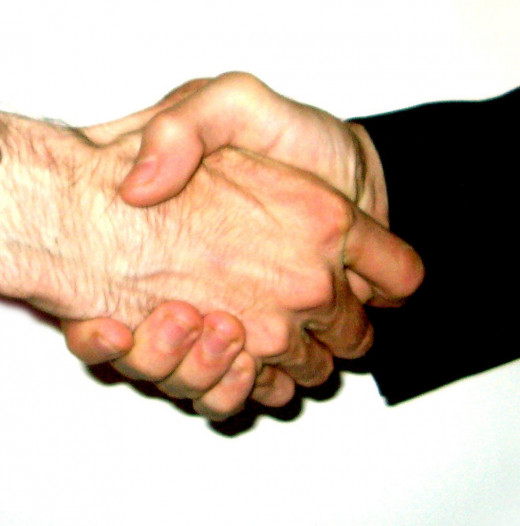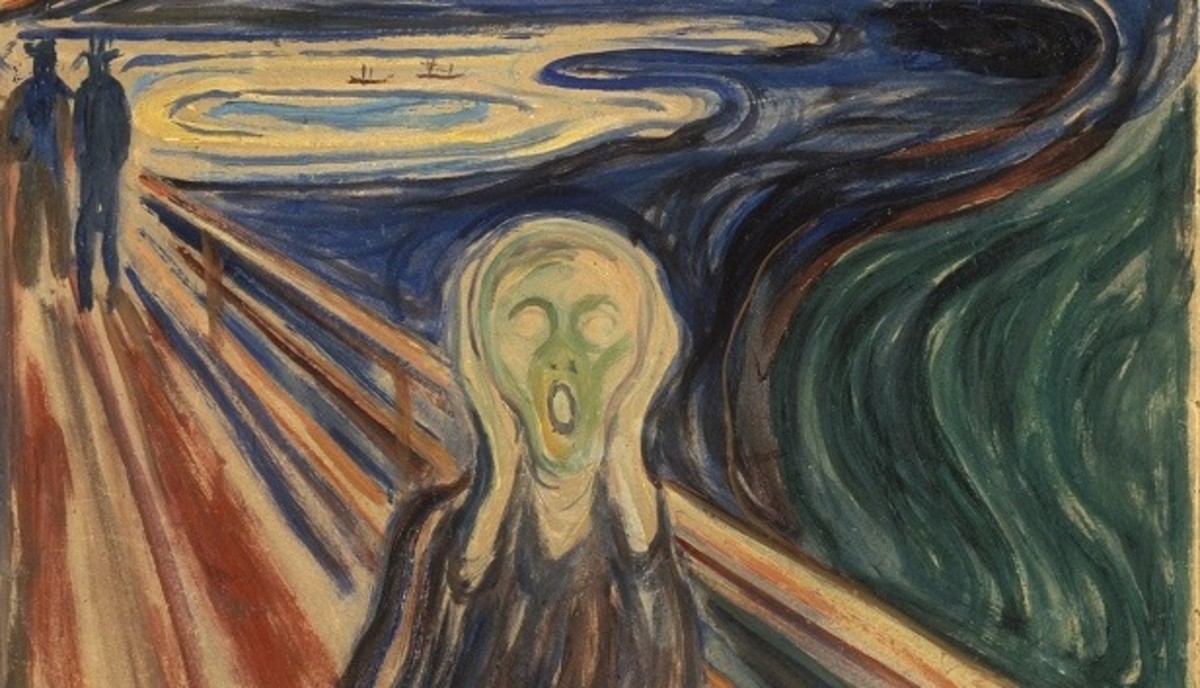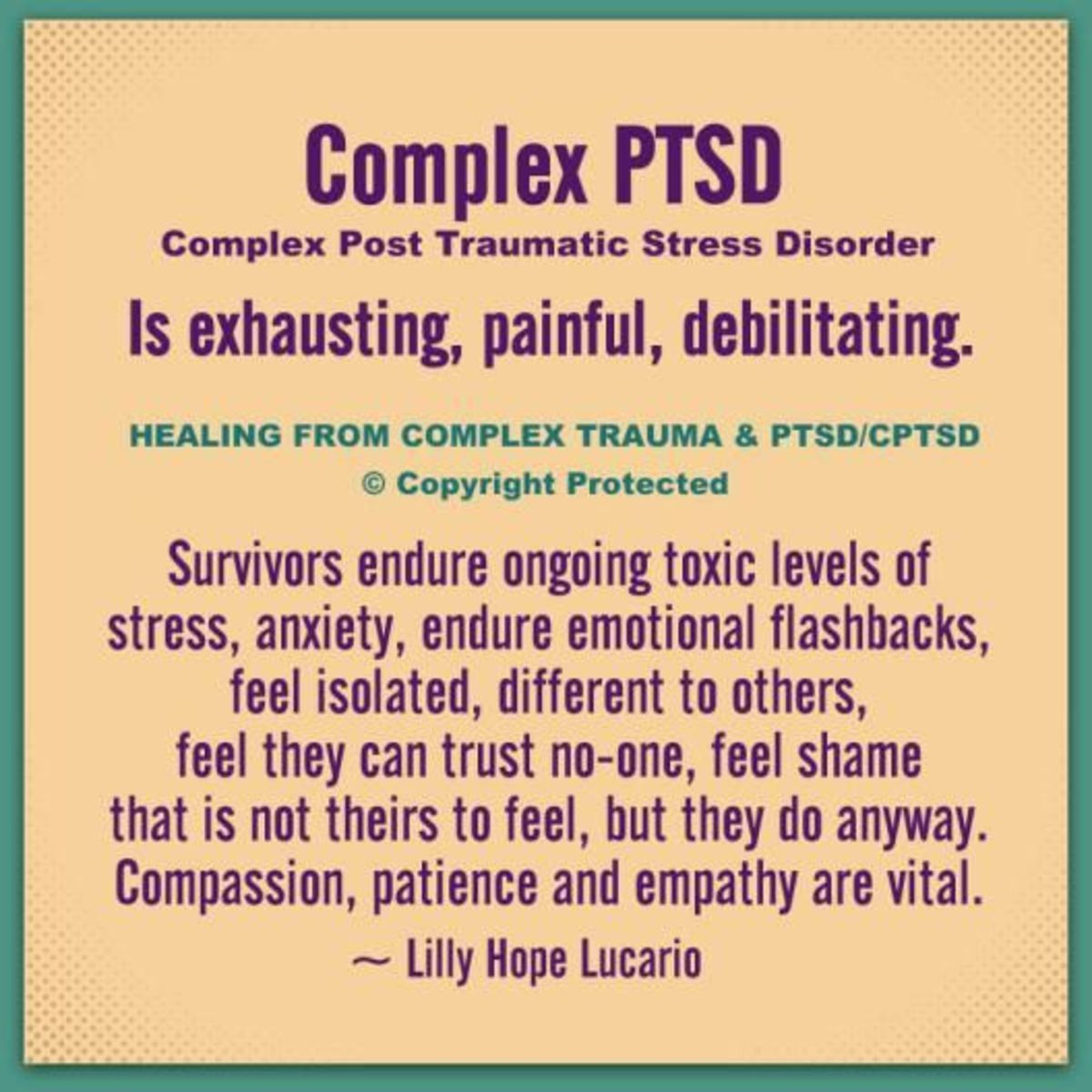- HubPages»
- Health»
- Mental Health»
- Anxiety Disorders
Obsessive Compulsive Disorder - Overcoming Repetitive Behavior

Introduction
Nearly all of us have quirks, tendencies, eccentricities even, which we would be happy to shed. Still, to some degree, these idiosyncrasies comprise part of who we are; as such, they are innocuous, even endearing.
Many of these actions stem from worthwhile concerns regarding hygiene and safety. Given this fact, when does an urge to check taps, cookers, locks and the like evolve into a need so deep as to limit or even immobilize the sufferer?
The Hole in My Soul
While I was at boarding-school, one girl, Zoe, gradually at first, then by degrees until it became incessant, throughout each day and well into the night would shout “I've got a hole in my soul”. Her refrain echoed throughout the halls, haunting the corridors. In time, given numerous counseling sessions, warnings and parental conferences, Zoe was expelled from the school for disruptive behavior to the relief of staff and students alike.
Repetition as Aggression
Some clinicians might dismiss this acting-out as attention seeking behavior. Perhaps it was. Still, recollecting Zoe during my counseling training, I have come to believe that some aspect of OCD drove her to become a verbal vampire. I base this assumption upon the fact that most, if not all, behaviors generated by this condition come about in an effort to fill some canyon, in Zoe’s lingo, a hole in my soul.
By way of example, Jane Grant recounts in her memoir: Come Hither, Nurse, her experience on a psychiatric ward:
“An elderly man had a guilt complex which showed itself in obsessional tendencies, so that he had to pick up all cigarette ends that he saw. Before he came to the ward, this had reached the point when he had always to walk along the street with his eyes looking upward, because he was afraid that if he saw a cigarette end, he would have to bend down and pick it up, no matter where it was.”
Clearly, this constant looking up whilst walking about was likely to cause him harm by its preventing his noticing obstacles or traffic, jeopardizing not only his own safety, but that of fellow pedestrians and drivers.
Self-Destructive Behavior
In my counseling practice, I have come across various kinds of self-destructive behavior. One widow, Nelly, in late middle-age, felt the need to charge even her most generous friend’s petrol costs for short rides in her car, even when she herself was en route to the same destination.
Nelly’s trigger for seeking counseling was her alarm upon finding it agonizing to offer a well-liked guest a small cup of coffee. Her stinginess resulted in the ending of nearly all her friendships. She felt trapped between the pincers of loneliness on the one hand, and misery in giving on the other.
Nelly’s best avenue towards recovery will lie in psycho-therapy, often dubbed “talk therapy”, combined with a process called systematic desensitization. As its name implies, this type of therapy combines sessions centered on discussions of underlying causes, and gradual steps towards conquering, or at least controlling, the symptoms of Nelly’s disorder.
Continued Encouragement
She might be encouraged to give away small things at first, perhaps to a charity shop or religious organization. This action may need to be repeated a number of times. Once she has reached a comfort zone, she might move on by leaving a gratuity in a restaurant, or buying a coffee for an acquaintance.
During this time, Nelly might be advised to cultivate new acquaintances via joining groups of various kinds and volunteering time at some branch of her community center. In addition, if and when she feels ready, she might risk phoning former friends she has lost due to her meanness.
Having contacted them, she might explain that she suffers from a disorder and is currently seeing a counselor in hopes of overcoming it. (This is one of the crucial steps in various 12-step programs) In order to reach this point, she will need to have reached a level of strength where her progress will not be curtailed or halted if she receives a rebuff to such efforts.
The Second Chance Was Mandatory
Another client, Chris, scheduled a counseling session because he had become overwrought by his wife’s insistence upon their going everywhere twice: restaurants where food and service were poor, films neither of them had enjoyed, and holiday resorts they had both detested. Despite attempts on his part to reason with her, she refused to see her demand as a squandering of both time and money. Instead she regarded it as being thorough and fair, giving second chances.
While understanding the husband’s distress, I felt powerless to assist him. Firstly, it is all but impossible to aid a person via support and advice to another. This proves especially true where the person suffering from a disorder, does not see it as such. I could only hope that Chris’s wife confronts this fixation on her own, perhaps nudged into doing so by Chris’s refusal to join her in these repetitions. The support of a counselor to bolster her resolve might then prove fruitful. Unless and until this occurs, these duplicated outings seem doomed to continue.
There's nothing worse than taking something into your head. It turns into a revolving wheel that you can't control.
— Ugo BettiCause and Cures
What then, are the causes and cures for OCD? In fact, despite numerous clinical trials and theories propounded, some “recoveries” tend to be sporadic, rare, and often of limited duration. Currently, the most useful remedy seems to be an intensive course of psycho-therapy, most often in the form of CBT (Cognitive Behavioral Therapy) combined with systematic desensitization where appropriate.
Hope and encouragement can be found in Corey Friedman’s memoir, Against Medical Advice. Corey’s first recollection of being plagued by this and other conditions dates from a few days before his fifth birthday. Following many failed medical treatments, he found relief, at last, in a hospital specializing in the needs of such sufferers. In a journal reflecting his progress, he writes:
“The main goal now is to deliberately expose myself to my obsessive behaviors … in order to gain control over them. Before this, my doctors did everything they could to suppress my symptoms. Every day, I focus on my most extreme tics, and try to refrain from performing them for longer and longer periods of time. … Right now, I can go more than 15 minutes without doing any unusual movements.
There are days when it isn't that good, but little by little, I've gotten some control over my body. Mr. Roberts (therapist) is teaching me a progressive relaxation technique. To help with this, I made a tape that I play in my headphones which I play in my head when I need to calm down. Learning new ways to breathe also helps to control my anxiety
The Three Major Forms
Having viewed some of the many guises OCD can assume, we will focus the rest of this article on 3 major types: fear of germs, (Mysophobia), excessive hoarding (no clinical definition available), and the need for incessant reassurance, (often a component of Dependent Personality Disorder)
Mysophobia: The Fear of Germs
This disorder stems from natural needs to prevent illness by use of conscientious cleansing and sanitizing. At the same time, studies have shown that children confined to an overly sterile environment can later become vulnerable to disease in that their immune systems have been denied an opportunity to develop.
Thus, some middle-ground should be found between the two poles of over-conscientiousness and lack of vital care. Obsessive hand-washing, though sometimes connected to Mysophobia, may be a separate disorder. The divergence is subtle; discussion with a trained clinician is sometimes needed in order to clarify this distinction, and then to decide upon the optimal treatment plan.

Declined to Shake Hands
Let’s consider Eugene, a public relations manager. His fear of germs manifests itself in his terror of shaking hands, drinking from the same cup as another, or refusing to utilize public rest-rooms. These symptoms have begun to impact on both his social and professional dealings. He has been warned that clients have found what they perceive as his aloofness off-putting.
Again, the above-treatment methods may be employed. The desensitizing aspects will be gradual: perhaps Eugene will first try shaking hands with the therapist. Once fairly at ease with this, he might be urged to bite into an apple the therapist has just bitten into. Drinking from the same cup might be tried.
Eugene, when ready, may be encouraged to touch a dust-covered surface, or, when deemed ready, to touch a substance which is unsanitary. He will be allowed to scrub his hands almost directly thereafter. (At no point will an ethical therapist use even the mildest form of coercion. If this occurs, it is suggested that the client terminate therapy immediately.)
The point of these exercises is to prove to Eugene that he has survived these experiences without having met with menacing consequences.
Some therapists might be willing to accompany Eugene to a social gathering, posing as a friend. Once in that setting, the therapist will engage in those types of situations which smother Eugene in apprehension. This therapist, by a sense of prearranged, subtle signals, might also encourage Eugene to undertake one or more of these actions. Later, in a therapy session, together they will evaluate the result of the venture and decide whether it would be beneficial for it to be repeated.

Hoarding: The Pack-Rat
As we have seen, there is no clinical definition for the emotional inability to rid one’s home of items of no value or use. This tendency to be a “pack-rat” can reach a point where it becomes difficult to move within one’s living space.
One aspect, the inability to discard garbage, (syllogomania), can become a serious health risk. Once again, psycho-therapy sometimes proves of use. Via gentle, consistent probing, a therapist can often unearth the sources of this obsession. Still, as Pulitzer Prize winning novelist William Faulkner has written, “the past’s never dead. It is not even past”

The Past Can Rule The Present And Future
Often, deep in the subconscious mind, hurts which the conscious mind has forgotten, can spring into being in behavior well into adulthood. Thus, Penny, a client in her late twenties, described her coming home from her play group to find that her mother, in order to clean, had spoiled nearly all her dolls and stuffed animals by placing them in the washing machine.
Twenty-five years later, Penny wept as she recounted the incident. She could still recall her spotted dog, “Spotty”, with a tiny rip under his chin. Then there had been her teddy bear with a music box in its tummy which played Silent Night. Although her parents did all they could to replace these playthings, each one proved irreplaceable.
The Hurt of Non-Recognition
Similarly, Nigel, an executive in his forties, said his birthday, being three days before Christmas, was never commemorated in itself. Instead, he was given a few extra presents at Christmas and was assumed to be glad of them. He still felt hurt at the absence of candles, a cake and ice cream-even the song “Happy Birthday”. Worsening what he perceived as a slight, his parents viewed all toys as communal.
This meant that if any of his four younger siblings were to grab one of his gifts before he had had time to enjoy it, was allowed to play about with it for as long as they liked. If breakage occurred, one was expected, if not to smile, to show no annoyance-after all, it was Christmas. Now, in the freedom of counseling, Nigel said, “I could never own anything.”
The Consequences For Penny And Nigel
For both Penny and Nigel, these memories resulted in hoarding to the point that it created difficulties in moving from one room to another, absorbing a good deal more than 50 percent of their living space. In cases of hoarding, talk therapy may need to be accompanied by a hands-on approach.
This might entail a trained counselor visiting a client’s home in order to assist in weighing what value or purpose each item might have as opposed to the space it occupies. In such cases, the counselor offers no judgments and exerts not the slightest pressure ultimately the choice to retain or discard is left to the client.
At times, in more delicate cases, it is useful for a close friend to be in the client’s home in order to accompany the counselor in culling keepsakes from relics. This proves especially true in the case of bereavement. The friend can often aid the mourner to decide whether to retain various bits of memorabilia, differentiating from treasures which ought to be kept and items which can only serve to re-kindle regret, guilt or sorrow.
My Wife My Parrot

Dependence And The Need For Reassurance
This is often a major component of Dependent Personality Disorder. Based on a craving for comfort, the terror of abandonment, this disorder tends to drive away those upon whom the sufferer most relies. This seemingly pointless need for repetition can madden its recipient to the point where one client’s spouse said, “I thought I’d married a woman, not a parrot.”
Although such words might sound brutal, they summarize the miseries of those exposed to such a cavern of inquiries. Examples of such “parroting” might include:
- Are you sure you still love me?
- Do I really look nice?
- In terms of my career, do you think I’m a failure?
One cruelty of this disorder is that, the more reassurance given, the greater becomes the addiction for more. Both parties are at first unaware of the fact that the giving of reassurance is the equivalent of providing drugs to a substance abuser, or a chocolate bar to a diabetic.
At first, the requested answer is palliative: for a brief time, the sufferer finds a degree of contentment. Still, such serenity lasts only as long as the peace granted by a cigarette to someone struggling to give up smoking. These ceaseless pleas tend to force even the most loyal partner or friend to free themselves from such shackles.
Omnipresence Can Turn Love Away
One client, Alex, sought counseling due to his having exhausted his every past intimate relationship due to his “omnipresence”. When involved with a partner, he asked for unending pledges of love and promises never to leave him. His reason for seeking counseling was the likelihood of losing yet another partner due to his ever-increasing demands.
Alex was attractive, witty, and talented both as a comedy writer and performer. Still, I could understand the reasons for the probability of his current partner’s imminent departure. Apparently, when she told him, “I need to be inside my own space,” he replied, “I need to be inside your space as well.”
Even her turning her back to him, in order to go to sleep, ten minutes or so after love-making, Alex perceived as rejection. Unfortunately, Alex terminated therapy before the situation could be resolved. While wishing him well, I felt some concern at his absolute refusal to accept any role in the endings of his relationships. Any form of progress towards recovery must begin with recognition of some type of compulsion.

Childhood Antic: Throwing Eggs
In a similar case, Clara, a woman well into her thirties was still haunted by an act of mischief done during her early teens. She and a friend, hiding behind a hedge, had thrown eggs at the windows of the car of a teacher they viewed as a bully, just as he began driving out of the parking garage. These antics caused no harm, beyond what Clara perceived, (and still does) justified revenge against a predator, tyrant and bully.

The Butterfly Effect
Still, after more than two decades, Clara is often debilitated by the thought that her egg throwing might have caused the teacher to stop his car with undue abruptness, causing another vehicle to swerve, via the chaos theory by which the shift of a butterfly’s wing can, through its ripple effect, result in an earthquake somewhere on the other side of the globe.
This horror torments her, even though numerous, in-depth discussions with officers at her local police station, delving into past records, have revealed no finding of any road accident of any kind which could be traced, in the slightest way, to her egg-throwing. Currently, she is confronting legal action by the police, due to what they view as harassment, absorbing police time needed for investigation into genuine crimes.
Tragically, during her times of clear thinking, Clara is a valued university lecturer. Almost certainly, she would have earned tenure by now, were it not for these lapses. During these bouts, she asks everyone, from her dearest friend to her merest acquaintance, sometimes even passers-by on her street, “Do you think I might have caused someone harm-might I have killed somebody?”
Verbal Manipulation
As we have seen above, any reassurance provided serves only to deepen her need for repetitions of ever-growing frequency. Refusals to respond, or to reiterate reassurance, have driven Clara to a variety of verbal manipulations. Examples include:
- “In other words, you are saying …”
- “I guess what you’re implying is that …”
- “Am I right in thinking that you believe …?”
- “What you are telling me is that…”
Her maneuvers seem infinite.
In its own way, we have come full circle to Zoe, striving to feed some need in her soul by a mantra-like repetition.
Returning to Clara, her optimal treatment mode seems to be to extend, gradually, the number of times she requests reassurance. In some relationships, a kind of contract is drawn up, often with the aid of a therapist, for reassurance to be requested and given, perhaps only once an hour, the length of time expanding by degrees, until, ideally, the sufferer can learn to relinquish the need.
This video is about coping with OCD a personal story and its treatment via cognitive behavioural therapy
The Brainstem Theory
Some therapist’s hold that the roots of OCD are lodged in the brain-stem the primal part of the brain which generates our most basic actions and responses to any potentially menacing stimuli. Others contend that after countless repetitions of the same act, it can become enmeshed in the brain’s circuitry.
To reverse such hard-wiring can take an enormous effort on the part of both client and therapist. Still, as Corey Friedman’s memoir relates, it can be accomplished. Mr. Friedman now lives a life he could not have envisaged during the depths of his caverns of misery.
Medication
In dealing with OCD, medication is sometimes prescribed, but must be monitored with vigilance so that the sufferer does not begin taking tablets as an additional symptom. Especially in cases of Dependent Personality Disorder, the patient may become reliant upon tablets to the point of addiction. Thus, medication is prescribed, if at all, on a short-term basis, along and only in conjunction with psycho-therapy.
Hypnotherapy Transcends The Hard Drive
Whilst no definitive cure has been found, there is evidence that, by accessing the unconscious mind via bypassing the conscious mind, escape can become feasible. Hypnotherapy and even aromatherapy can prove useful in that it transcends the limits of the conscious mind in order to reach the unconscious. It might prove fruitful, to imagine the unconscious mind as a hard-drive, storing within itself every idea, thought or dream we have harbored from the second of birth; some believe while still in the womb.
Conversely, the conscious mind operates as a keyboard, transmitting ideas and dreams to the hard drive, often censored by what the gatekeeper of our conscious mind finds less than acceptable. (It has been said that we all have thoughts which would shame the devil) Thus, if we can reach the unconscious mind, we can release whatever fears we might have which can restrain us from achievement in any number of areas.
The following two scenarios, while offering no conclusions as such, raise intriguing issues
A single dad, needed to meet and collect his two young children from school. He has to use his bicycle, as his car had broken down. In addition to rush-hour traffic, a storm began, causing thunder, lightning, flash-floods and hail stones. Pelted and slowed by this onslaught, he knew the school would close within minutes; it was vital to get there.
Somehow he did. He reached his children seconds before the gates were due to be locked for the day. The dad walked beside his bike, holding one handle-bar with one hand; the two children walked home beside him. He prepared dinner, put both children to bed, had a cup of tea, then he fell asleep.

Fear Bonded by Lightning
Next morning, from the moment he woke, his body felt stiffened. As he tried to sit up, he found he could hardly move his arms, and only with pain; they stayed locked in stiffness and pain as if they were on the handlebars of his bike when the thunderstorm assailed him. Not wishing to cause his children alarm, he told them they could have a day off from school. At this news, they were too elated to question the fact of having to make their own breakfast.
The moment he could, their dad headed off to his doctor on an emergency basis. His doctor, having talked to, then examined him said, “Stand up and raise your arms over your head, stretching upwards as high as you can.” Dad did as instructed. Then, after letting him stand for a moment, the GP barked in a startling tone, “Now, put your arms down.” Dad did so, his arms seeming to drop to his sides via their own volition. Once again, his joints felt loose, flexible; the rigidity did not re-occur.
The doctor had averted his attention and released him from a psychosomatic bond.
Logorrhoea: Please Stop Talking
In our final example, a woman was plagued by the need for compulsive talking, defined as logorrhoea: A major symptom of this disorder is excessive, often pointless wordiness. This compulsion, increasing with time, caused, her husband, children and friends to terminate contact with her.
Etiquette had been abandoned. Neighbors and acquaintances no longer made the slightest effort to hide their rushing across roads or, taking detours in order to avoid her. In time, her only source of companionship consisted of visits to nursing-homes.
A Gentle Healing
Before long, even the most lethargic of patients began leaving the lounge shortly after her entry. One afternoon, when everyone except one man in his nineties remained, she sat, disconsolate. Then the man, barely able to move from one side of the room to the other, came close enough to her to place one of his hands on either side of her throat. He stood still for some moments, and then said, “Be quiet”. He stood a moment longer, and then stepped out of the sitting-room, leaving her to consider his meaning.
The man’s words, combined with his touch, brought about a kind of healing with in her. Since then, she continues to visit the home. If a patient talks to her, she responds. On occasion, she might comment on a television program or timely event. Still, over-all she stays quiet, in a serene, pleasant, friendly way. Patients, a little wary at first, now enjoy her companionship.
Do you believe you suffer from some form of OCD?
Conclusion
These two examples, while fascinating, in themselves offer no answer as to the roots and solutions of this pervasive disorder. They do suggest, however, that reaching the unconscious mind might prove an avenue towards progress.
Overall, science and psychology are striving together to do all they can to assist those plagued by this condition.
© 2014 Colleen Swan






